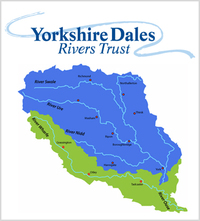


Local Sponsors
-
Yorkshire Dales River Trust
Yorkshire Dales Rivers Trust. 8 Kings Court, Pateley Bridge, North Yorkshire, HG3 5JW
Volunteers are invaluable to the YDRT and we are always looking for people to join us in helping to care for our rivers. Would you like to help protect your local environment? Do you enjoy working outside in iconic locations? Would you like to gain practical skills or develop a career in environmental management? Come and volunteer with us. We have many activities that you can get involved for any ability or experience. It’s great fun in a friendly environment.
More information
Many thanks to The Bolton Estate for facilitating this camera's location and to The Yorkshire Dales River Trust for capitally funding it's installation. The River Ure, once a thriving habitat supporting an annual catch of 3,000 salmon, suffered severe pollution during the Industrial Revolution, greatly diminishing the population of migratory fish. However, with the ongoing improvement of The Humber River System's cleanliness, the river Ure is now witnessing a rapid increase in the numbers of salmon and other migratory fish, including sea trout. The Estate actively supports The Ure Salmon Trust, an organization established to aid the recovery of salmon populations in the Ure and promote the development of a salmon fishing industry within its catchment area.
The signs of recovery are highly promising. In 2011, a total of 35 salmon and 14 sea trout were caught on our water from just 50 fishing outings. The following year, in 2012, 94 fishing days resulted in catches of 50 salmon and 27 sea trout. Despite adverse fishing conditions in 2013, 47 salmon and 17 sea trout were successfully caught. Encouragingly, the number of validated upcounts on the fish pass at Westwick exceeded 8,500 for the year, more than double the previous year's count. In May 2014, the first three salmon were caught, indicating a hopeful trend of an increased number of fish migrating earlier in the season and extending the fishing period.The village of Wensley lends its name to the picturesque dale known as Wensleydale. For a century following its charter in 1202, Wensley was the sole market town in the dale, a distinction that persisted until the 16th century. In 1563, Wensley was struck by a plague, leading some surviving villagers to seek refuge in Leyburn. However, the village experienced a revival a century later when Charles Paulet constructed Bolton Hall in 1678, eventually becoming the Duke of Bolton. The present Bolton Hall is a reconstruction following a fire in 1902.Upper Wensleydale is characterized by a high, open, and remote U-shaped valley, overlaying Yoredale Beds. The gradient is gradual towards the northern end of the valley, becoming steeper as one proceeds southward. Glacial drumlins flank either side of the river, which flows swiftly yet shallowly. Numerous gills, cutting through woodlands and primarily sheep farms, contribute to the river's water supply. The picturesque Settle to Carlisle railway runs along the western side of the valley in this area.Mid Wensleydale comprises Great Scar limestone beneath Yoredale beds, forming the valley's sides, which are adorned with stepped limestone scars. The valley floor consists of glacial drift tails and moraine. Here, the river meanders broadly and gently through a stony channel, while the four tributary valleys contribute to several captivating waterfalls.Lower Wensleydale is a wider section of mid Wensleydale, with the river meandering gently until it descends significantly at Aysgarth, forming impressive tiered waterfalls. As one progresses, the valley sides become increasingly wooded.From Middleham onwards, the river assumes the characteristics of a mature river, meandering in wider arcs as it flows southeast. The valley has been inhabited since prehistoric times, with evidence of earthworks and artifacts from the Bronze and Iron Ages displayed at the Dales Countryside Museum in Hawes. The Romans also established a fort at Bainbridge. Place names in the valley reflect the different waves of settlers, including the Angles and Norse, evident in the typical suffixes such as "ton" and "sett."During medieval times, much of the upper dale was dedicated to sheep farming, under the ownership of Middleham Castle and Jervaulx Abbey. In 1751, the Richmond to Lancaster Turnpike was established, initially following the Roman road from Bainbridge. In 1795, the route was diverted along the valley to Hawes, taking the Widdale route, now known as the B6255, leading to Ingleton.More recently, in 1990, Aysgarth Falls served as a filming location for "Robin Hood: Prince of Thieves," featuring the scene where Robin Hood engages in a duel with Little John. The falls also appeared in the 1992 adaptation of "Wuthering Heights" and the 1984 TV miniseries "A Woman of Substance."
